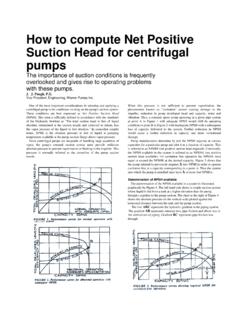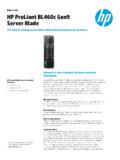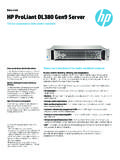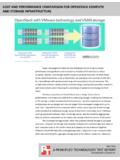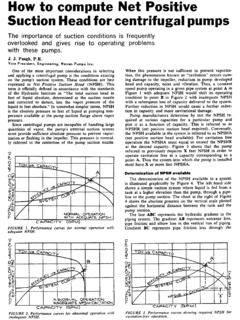Transcription of 031-2008: PROC REPORT: Compute Block Basics -- …
1 1 Paper 031-2008 proc report : Compute Block Basics Part I TutorialArthur L. CarpenterCalifornia Occidental ConsultantsABSTRACTOne of the unique features of the report procedure is the Compute Block . Unlike most other SAS procedures, PROCREPORT has the ability to modify values within a column, to insert lines of text into the report , to create columns, and tocontrol the content of a column. Through Compute blocks it is possible to use a number of SAS language elements, manyof which can otherwise only be used in the DATA step. While powerful, the Compute Block can also be complex and potentially confusing. This tutorial introduces basic computeblock concepts, statements, and usages. It discusses a few of the issues that tend to cause folks consternation when firstlearning how to use the Compute Block in PROC paper is being presented in conjunction with the Hands-on Workshop proc report : Compute Block Basics PartII Practicum (Paper 188-2008)KEYWORDSPROC report , Compute Block , LINE, report Row PhaseINTRODUCTIONW hile the topic of Compute blocks in the report step is not particularly difficult or advanced, the discussion of computeblocks must necessarily assume that the reader has a basic understanding of the report step itself.
2 In the discussionthat follows, an understanding of the COLUMN, DEFINE, BREAK, and RBREAK statements and their relationships to eachother is assumed. The reader should also be aware of the different define usages of report are two basic types of Compute blocks; those that are associated with a location (the option BEFORE or AFTER follows the Compute keyword), and those associated only with a report item. While the structure and execution of thesetwo types of Compute blocks is similar, how they are used and the timing of their execution can be quite Compute Block starts with the Compute statement and terminates with the ENDCOMP statement. Usually thecompute Block is placed in the report step after the DEFINE statements. The syntax of the Compute Block lookssomething like: Compute <location> <report_item> </ options>;one or more SAS language elementsendcomp;The components of the Compute statement include: locationSpecifies when the Compute Block is to execute and ultimately what is to be done with the result ofthe Compute Block .
3 Accepted values include BEFORE and AFTER. When a location is specifiedwithout also specifying a report_item, the location will be at the start (BEFORE) or at the end(AFTER) of the report . report_itemWhen the result of the Compute Block is associated with a variable or report item, its name issupplied here. This report_item variable can be any variable on the COLUMN statement. Whenreport_item is a variable that either groups or orders rows (usage of GROUP or ORDER) you mayalso use BEFORE and AFTER to apply the result at the start or end of each group. Beyond the BasicsSASG lobalForum2008 2 Using Proc REPORTB lank Line After Region weight in pounds region Gender n mean 1 M 4 195 2 F 6 M 4 105 3 F 5 M 5 4 F 4 143 M 10 LINE statement hasbeen used to insert a blankline AFTER each regionalgroup.
4 OptionsSeveral options are available that can be used to determine the appearance and location of theresult of the Compute Block . SAS language elementsAny number of SAS language elements can be used within the Compute Block . These include theuse of executable statements, logical processing (IF-THEN/ELSE), and most of the functionsavailable in the DATA Compute Block can be placed anywhere within the report step, however generally Compute blocks are groupedfollowing the DEFINE THE LINE STATEMENTOne of the more interesting programming statements within the Compute Block is the LINE statement. This statement isroughly analogous to the PUT statement in the DATA step and can be used to introduce lines of text into the a Blank LineIn the following example a blank line has been inserted AFTER each level of the grouping variable (REGION).
5 * Blank Line using Compute ;title1 'Using proc report ';title2 'Blank Line After Region'; proc report data= (where=(region in('1' '2' '3' '4'))) nowd; column region sex wt,(n mean); define region / group format=$6.; define sex / group format=$6. 'Gender'; define wt / analysis; Compute after region; line ' '; endcomp; run;Because the Compute statement contains the location specification AFTER and also designates the report itemREGION, we have effectively requested that the results of the Compute Block (a blank space) be written after each groupof the grouping variable Lines of TextIn the previous example the LINE statement added a blank line, the LINE statement is more commonly used to add lines oftext at specific locations in the report . Beyond the BasicsSASG lobalForum2008 3 Using Proc REPORTF ootnote Using LINE weight in pounds region Gender n mean 1 M 4 195 2 F 6 M 4 105 3 F 5 M 5 4 F 4 143 M 10 Weight taken during the entrance report was generatedwith the system optionNOCENTER in effect(notice the titles).
6 Even sothe results of the LINE statement will be centeredunless a columnspecification is the following example the text is written as a footnote at the end of the report . We can specify the options BEFORE andAFTER to indicate the location, and since in this case no grouping variable appears on the Compute statement, theAFTER applies to the whole report .* Text Line using Compute ;title1 'Using proc report ';title2 'Footnote Using LINE'; proc report data= (where=(region in('1' '2' '3' '4'))) nowd; column region sex wt,(n mean); define region / group format=$6.; define sex / group format=$6. 'Gender'; define wt / analysis; Compute after region; line ' '; endcomp; Compute after; line @20 'Weight taken during'; line @20 'the entrance exam.'; endcomp; run;In these LINE statements the @ is used, as it is in the DATA step PUT statement, to designate the column number.
7 If aspecific column is not specified with the @, and no justification options are specified, text generated by the LINE statementwill be centered. This is a different default behavior than the PUT statement in the DATA writing to ODS destinations other than LISTING, proportional fonts may make exact placement of values difficult,and may require you to use a trial-and-error approach, and to make things more interesting some destinations ignore the@ altogether. Writing Formatted ValuesFormatted variable values can be placed on the report using the LINE statement, and these values can be placedBEFORE or AFTER each group. In the following example the user defined format $REGNAME provides a text name forthe first four regions. These names are than added to the report through the use of a LINE statement and a computeblock.
8 Proc format; value $regnameBeyond the BasicsSASG lobalForum2008 4 Three Compute blocksare used to generate thethree types of text. Aformatted region nameBEFORE each region , a blank line aftereach region summary ,and footnote text at theend of the report . '1' = 'New England' '2' = 'New York' '3' = 'Maryland' '4' = 'South East'; run;* Text Line using Compute ;title1 'Using proc report ';title2 'Formatted Values';footnote1 'at the bottom'; proc report data= (where=(region in('1' '2' '3' '4'))) nowd; column region sex wt,(n mean); define region / group format=$6.; define sex / group format=$6. 'Gender'; define wt / analysis; Compute before region; line @3 region $regname8.; endcomp; Compute after region; line ' '; endcomp; Compute after; line @20 'Weight taken during'; line @20 'the entrance exam.
9 '; endcomp; run;The format $REGNAME could have also been used in the DEFINE statement, however in this case we wanted to show theunformatted value as well as the formatted group SAS LANGUAGE ELEMENTSMuch of the power of the DATA step is available within the Compute Block . This radically increases the flexibility of theREPORT step as most of the SAS language elements, such as, routines, functions, arithmetic operations, and executableUsing Proc REPORTF ormatted Values weight in pounds region Gender n mean New England 1 M 4 195 New York 2 F 6 M 4 105 Maryland 3 F 5 M 5 South East 4 F 4 143 M 10 Weight taken during the entrance the BasicsSASG lobalForum2008 5 The label for the variableWT contains the units(pounds)
10 , so a newcolumn header is Proc REPORTC onverting Weight to Kg first Weight last name name Gender in Kg Halfner John M Johnson Randal M Rodgers Carl M Cordoba Juan M Baron Roger M Adams Mary F Rymes Carol F Most Mat M Jackson Ted M Maxim Kurt M Perez Mathew M East Clint M Batell Mary F Rumor Stacy F can also be used within the Compute Block . These include DO loops, assignment and sum statements,ARRAYs, and IF-THEN/ELSE processing. Most of the functions and routines that do not work in the Compute Block are those that utilize either the DATA step sProgram Data Vector, PDV, or the processing of the DATA step itself.










